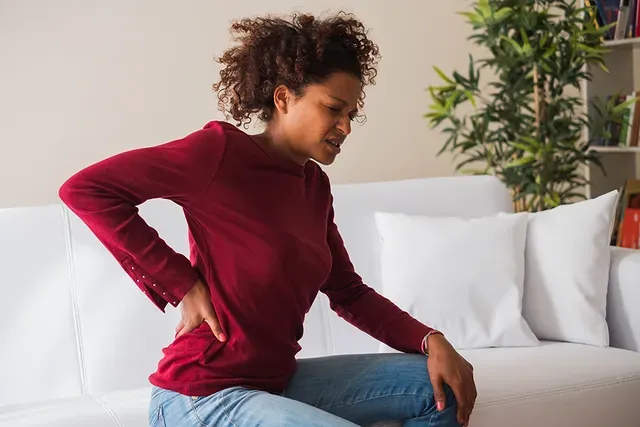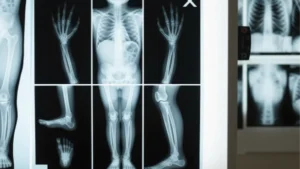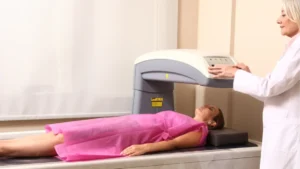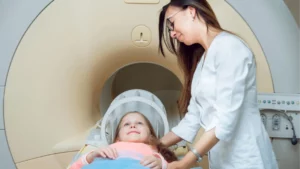We all know what pain is. It’s your body’s natural response to illness or injury, a red flag that something is wrong. And many people suffer from ongoing chronic pain.
Introduction To Chronic Pain
We all know what pain is. It’s your body’s natural response to illness or injury, a red flag that something is wrong. And many people suffer from ongoing chronic pain.
Usually, the pain goes away on its own as you heal, whether you do it on your own or with medical intervention. On the other hand, chronic pain is persistent, and it rarely goes away. Pain is considered chronic if your symptoms last for longer than three to six months.
You Might Have Chronic Pain If…
Although you need to talk to a doctor to diagnose chronic pain and receive the appropriate treatment, you might have chronic pain if:
- you’ve been in pain for longer than three months
- your pain affects your quality of life or ability to complete tasks
- your pain causes excessive stress and contributes to conditions like depression and anxiety
Symptoms Of Chronic Pain
The symptoms of chronic pain vary depending on where your chronic pain is located. Here are some of the most common causes of chronic pain and the symptoms you might experience if you’re suffering from them. If you believe you’re suffering from any of these forms of chronic pain, consult a medical professional as soon as you can.
Chronic Back Pain
Chronic back pain is often caused by:
- muscle strains
- hairline fractures
- nerve damage from ruptured disks
Chronic back pain may appear as sharp and stabbing pains that come and go, consistent throbbing, or discomfort when you use specific muscles.
Chronic Headaches
Chronic headaches tend to be caused by:
- muscle tension in the head or neck
- eye strain
- other conditions or diseases
- dehydration
Your chronic headache pain may be localized in one area, feel like it begins in your neck, becomes worse towards the end of the day, or cause sensitivity to light and sound.
Arthritis And Joint Pain
Arthritis and joint pain are commonly caused by overuse or strain on joints from contact sports, manual labor, or typing. Joint pain from arthritis may come and go or present constantly, but chronic pain from arthritis usually lasts a lifetime.
Chronic joint pain can make it difficult to be active or complete tasks, like doing the dishes, taking care of yourself or your children, or leaving the house. It commonly presents in the hands and knees but can appear wherever you have a joint.
Neuropathic Pain
Usually, chronic pain is caused by external circumstances (like bone or muscle conditions); however, with neuropathic pain, the nervous system is the prime suspect.
Chronic neuropathic pain usually feels like burning or stabbing. Nerve damage can be seen on MRIs and CT scans to confirm a diagnosis, and the most common causes for this type of chronic pain include:
- constant overstimulation from slipped discs or injuries
- advanced diabetes
- reflect sympathetic dystrophy (RSD)
- phantom limb pain from lost limbs
Fibromyalgia
Fibromyalgia is a complicated condition known to cause chronic headaches, chronic back pain, chronic joint pain, and chronic diffuse pain. Medical professionals don’t know exactly what causes fibromyalgia, but they suspect that this disorder causes your brain and spinal cord to misinterpret and amplify the strength of pain signals.
If your chronic pain is the result of fibromyalgia, minor bumps and bruises (and sometimes things that shouldn’t hurt at all) will feel more painful than they should. Essentially, everything hurts nearly all the time.
Common causes of fibromyalgia include:
- genetics
- the presence of other diseases
- emotional or physical abuse
- PTSD
- gender (fibromyalgia is more common in women)
- anxiety and depression
- lack of regular activity
Treatment For Chronic Pain
If you experience chronic pain, you must seek professional medical help to confirm a diagnosis and ensure your pain is not caused by a serious underlying medical condition. Chronic pain, wherever it is, can be a symptom of:
- cancerous tumors
- chronic conditions like MS, Lyme disease
- serious injuries to the muscles, bones, or nervous system
Depending on where your chronic pain exists and what’s causing it, the treatments can be vast and varied. However, if you must simply accept and live with chronic pain, the main treatment will be pain management.
Pain management techniques to treat chronic pain include:
- over the counter or prescription medications
- acupuncture, massage, chiropractic treatment, or myofascial release
- increased regular activity or decreased intensity of activities
- surgical implants to deliver medications or stimulate the spinal cord
- various therapies, including bioelectric therapy, TENS, and physical therapy
- treatment for depression and anxiety resulting from chronic pain
- dietary changes
Many people who suffer from chronic pain have found relief in the above treatments for managing pain independently. Regardless, you should always talk to your doctor or another healthcare professional about changes in your health and healthcare, including the presence of chronic pain and how to treat it.
Sources:




